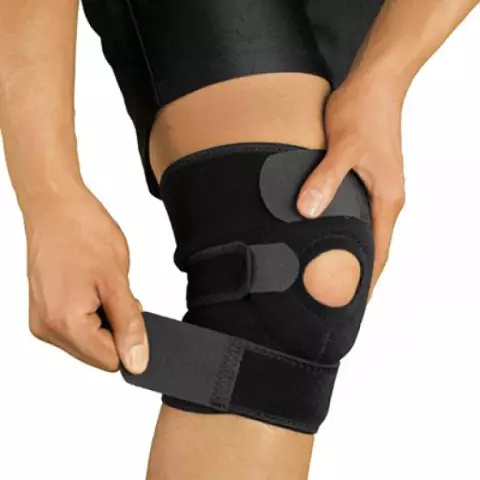- Author Rachel Wainwright [email protected].
- Public 2023-12-15 07:39.
- Last modified 2025-11-02 20:14.
Amiksin or Kagocel: what to choose?
The body of every person is attacked every minute by all kinds of microorganisms and viruses. As long as our shield - the immune system - can cope with the invaders, we are healthy. However, we are affected by too many factors that weaken the immune system, and periodic failures in its work are almost inevitable.

If humanity has learned to cope with bacteria through the use of antibiotics, then drugs that kill viruses have not yet been invented. Can the immune system be helped to fight a viral infection? It turns out you can. For this, there are immunomodulatory and antiviral drugs. For example, the well-known and long-used Amiksin.
Coming to a pharmacy for an antiviral agent, a person sometimes faces the problem of choice: which is better - Amiksin, or, for example, Kagocel? The indications seem to be the same, the reviews are positive, and the price is cheaper (Amiksin - 900-960 rubles per course or Kagocel - 400-440 rubles per course). Any of us wants to get the most by spending the minimum. Indeed, let's figure out by what criteria to choose a medicine and whether the price can influence this choice.
Despite the presence of detailed instructions for drugs and the ability of each of us to analyze information, diagnosis, as well as the choice and prescription of a drug, it is still better to entrust the doctor
"Amiksin" or "Kagocel": spectrum of activity and mechanism of action
We open the instructions and see in what cases both remedies are used: flu, SARS and herpes are on the lists of both. But as for cytomegalovirus, hepatitis A, B and C, as well as viral brain lesions and other situations requiring immunocorrection (chlamydia, tuberculosis), here Amiksin has advantages.
These drugs are often referred to as analogs for a similar mechanism of action. Indeed, they both enhance the production of interferons, which are active antiviral proteins. At the same time, "Kagocel" stimulates the production of only late interferon (a mixture of α and β interferons), and "Amiksin":
- Induces the formation of interferons of all types (α, β, γ, λ).
- It has an effect on other links of immunity (production of antibodies, helper-suppressor balance).
- Suppresses the multiplication of viruses.
As you can see, Amiksin has slightly more points of application
Age recommendations and contraindications
"Kagocel" - from 3 years old for the treatment and prevention of influenza and ARVI and from 18 years old for the treatment of herpes. “Amiksin” - from the age of 7 for the treatment of influenza and ARVI, for all other indications - from the age of 18. That is, in children's practice "Kagocel" is preferable.
With the exception of age restrictions, drug contraindications are similar: pregnancy, lactation, individual intolerance plus lactase deficiency, lactose intolerance, glucose-galactose malabsorption (for "Kagocel").
Table: comparative characteristics of drugs
In order to make it easier to navigate, which is better in a particular situation - "Kagocel" or "Amiksin", their characteristics are given in the table:
| "Amiksin" | "Kagocel" | |
| Indications |
In children over 7 years old: Treatment of ARVI and influenzaIn adults:
|
In children over 3 years old: Prevention and treatment of ARVI and influenzaIn adults:
|
| Active substance | Tiloron. | Kagocel. |
| Mechanism of action |
|
Causes the formation of interferons α and β. |
| Spectrum of action | The causative agents of ARVI and influenza, a group of herpes viruses, hepatitis viruses A, B, C. | The causative agents of ARVI and influenza, herpes virus. |
Drug intake and body reaction rate
This is a very important point, because for a modern person with a predominantly active rhythm of life, the less often you need to take pills, the better. So there is less chance of forgetting, missing, breaking the regimen and eventually not getting the desired effect.
Not every one of us, running out of the house in the morning, will remember to take a package of the drug with us. Not to mention the children. Therefore, when choosing a medicine, pay attention to the regimen of its administration:
- "Kagocel": three times a day.
- "Amiksin": once a day.
After taking the first dose of "Kagocel", the peak concentration of interferon in the blood serum occurs after 48 hours. And after taking the first dose of "Amiksin", the body's reaction is observed after 24 hours.
So, we made a comparison: which is better - "Amiksin" or "Kagocel", taking into account the characteristics of the drugs and instructions for the use of drugs. What do we have in the end? If we are talking about the treatment of children from 3 years old, then the question of what will be better for them ("Kagocel" or "Amiksin") is generally not worth it, since "Amiksin" is not used in patients of this age category.
In cases where urgent treatment of children from 7 years of age and adults is required, as well as effective prevention of acute respiratory viral infections and influenza in adults, it is more rational to use Amiksin.
In this case, a higher price corresponds to greater efficiency, broadening the spectrum of action and accelerating the onset of the effect.
Found a mistake in the text? Select it and press Ctrl + Enter.






